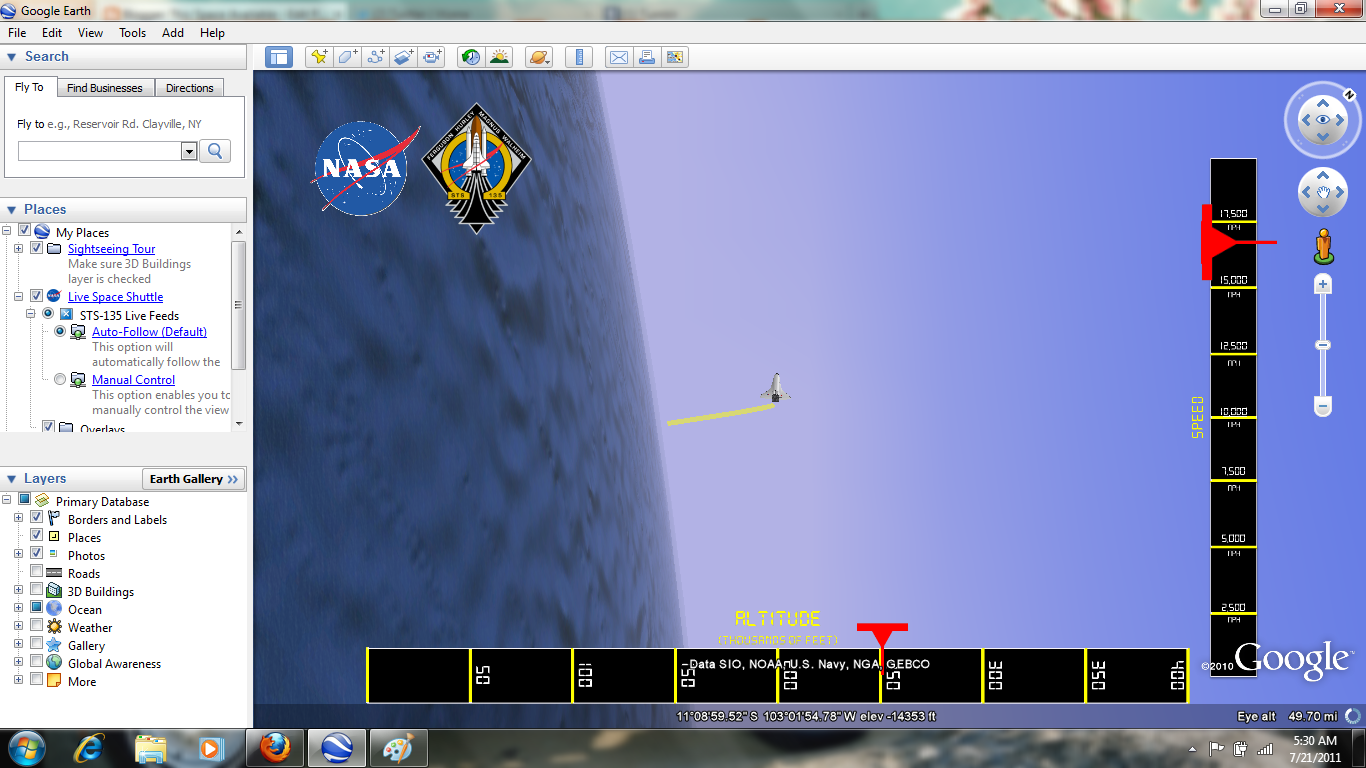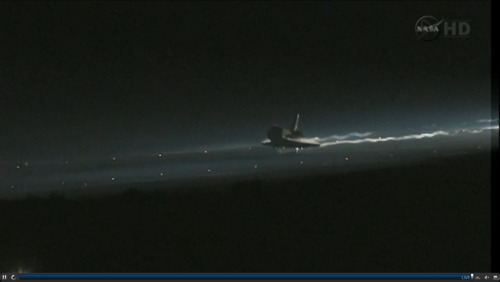5:00 AM update: Watching NASA TV right now. Those following the landing in Central Florida should hear the twin sonic booms approximately three minutes before touchdown at 5:56 AM. Descent can also be followed on Google Earth in real time. Right now, Atlantis is above Australia. According to Mission Control, everything on Atlantis is functioning perfectly.
According to NASA TV, Atlantis has traveled over 126 million miles in its career. That is nothing short of mind-blowing.
5:27 AM: Reentering now. Just above 300,000 feet.
5:29 AM: Closed loop banking has commenced to dissipate excess energy during reentry. The orbiter banked 70 degrees. It looked pretty wild on Google Earth.
5:37 AM: Atlantis is now at about 250,000 feet with its wings pointed towards the Earth. Roll reversals are about to commence. These roll reversals are now officially known at this blog as Crazy Ass Joe Engle Maneuvers. (I got you, Joe. We still remember STS 2.)
5:40: Mach 19. Yep, that’s awfully fast. Now just above 200,000 feet.
5:42: Mach 17. Atlantis rolled 62 degrees to the right. Fifteen minutes from touchdown. Watching it on Google Earth has been pretty amazing.
5:47 AM: Mach 7. Coming over Florida. We should hear the boom-boom soon.
5:48 AM: Nine minutes until the U.S. space shuttle program ends.
5:50 AM: Six minutes…Mach 2.5.
5:52 AM: Shuttle is now visible in sky.
5:53 AM: Less than 50,000 feet. Around Mach 1. Three and a half minutes until touchdown. Heard the last sonic booms. Okay, grabbing the Kleenex now.
5:56 AM: One minute then it’s all over. This is it.
5:57 AM: Atlantis has touched down for the last time. Thank you NASA for 30 marvelous years. I am speechless.
Me? I’m a tear-stained mess, and it was all worth it. I will put up touchdown pictures later today.
Emily Carney is a writer, space enthusiast, and creator of the This Space Available space blog, published since 2010. In January 2019, Emily’s This Space Available blog was incorporated into the National Space Society’s blog. The content of Emily’s blog can be accessed via the This Space Available blog category.
Note: The views expressed in This Space Available are those of the author and should not be considered as representing the positions or views of the National Space Society.




















